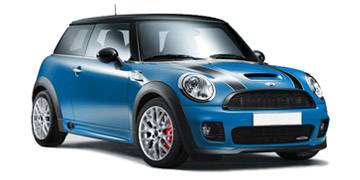MINI John Cooper Works reviews
Simply Superb
Added: 31st of March 2023
- 2015
- 2000
- Automatic
- Petrol
- Hatchback
- 3
Ownership now in its third month and admit from day one that this superb vehicle has me smiling every metre of steering it. It’s a joy to drive and be in, the performance and ergonomics are superbly sorted, cabin beautifully designed and finished in high quality materials giving it a real upmarket feeling. Three driving modes available to cover all driving conditions but in reality driving in sport mode is what this car was made for and it doesn’t disappoint. Poised at all speeds, the 2.0ltr BMW engine provides huge amounts of power along with a wonderful soundtrack ensuring lots of smiles per mile.
''Let The Fun Begin"
Added: 11th of August 2021
- 2013
- 1600
- Manual
- Petrol
- Hatchback
- 2
As a life long Ford kind of guy in my early 50's i decided to take a chance on a little car known as the Mini. So to start on my ambitious journey, i bought a 2008 Cooper S. It lived up to everything i read about the car, from sharp country roads to pops n crackless of the exhaust! One day, i thought to myself i would love an upgrade to a JCW. I didn't want it to stand out too much if you know what i mean, especially when you leave it somewhere. The thought of unwanted drawing of attention when i wasn't there was alsway at the forefront of my mind. But i guess, how many times do you ever see a bad Minni? So i decided to take a chance on a JCW, i never went overboard as you can only do what you can afford. So in 2021 i purchased a 2013 JCW, it has around half the spec to a top notch version but i read that the year 2013 for the Mini was a dramatic turning point for the company. Once you drive a Mini then your hooked! It's so fun and will truly put a smile on your face. The Minis are really the complete opposite in which i thought all my driving years. Nomatter what Mini you choose it will always be the one for you. The comfort, the retro style and the class just ouses out character on these wonderful cars. Thank you Cartec for your easy going style and no pressure sales as only you, should decide if you want to buy a car or not! My name is Mike and thank you for reading, happy driving and keep up the good work Cartec.
MINI gets it so right
Added: 13th of October 2013
- 2011
- 1600
- Manual
- Petrol
- Hatchback
- 2
After 15 years of funding the cost Porsche 911 ownership. I recently changed to a MINI John Cooper Works with all the trimmings. Seldom have I made a better decision. Everything - and I mean everything - about the buying and ownership experience has been superior to Porsche (and, for that matter that of a Volkswagen and BMW I also own). Most notably the attitudes of the Sytner and other dealerships I've dealt with who treat you like a busy, intelligent valued customer not a ignorant moron with a bank account to be drained and infinite patience as was the repeated experience with Porsche (and still is with Volkswagen and BMW). I've not been treated to a single piece of bulls**t thus far which used to be guaranteed every time I went near a Porsche (and still is in the case of Volkswagen or BMW) dealership. Keep up the good work MINI, perhaps you can have a word with your parent too.
MINI FUN
Added: 12th of October 2013
- 2008
- 1600
- Manual
- Petrol
- Estate
- 3
It's not mini fun but maximum fun driving the Mini Cooper Works


